These 7 Shade Trees Will Cool Your Home Naturally – and They're Safe to Plant Close to the House
After cutting down some problem trees on her property, Laura Miller realized just how vital shade trees are to keep things cool and save on air conditioning.
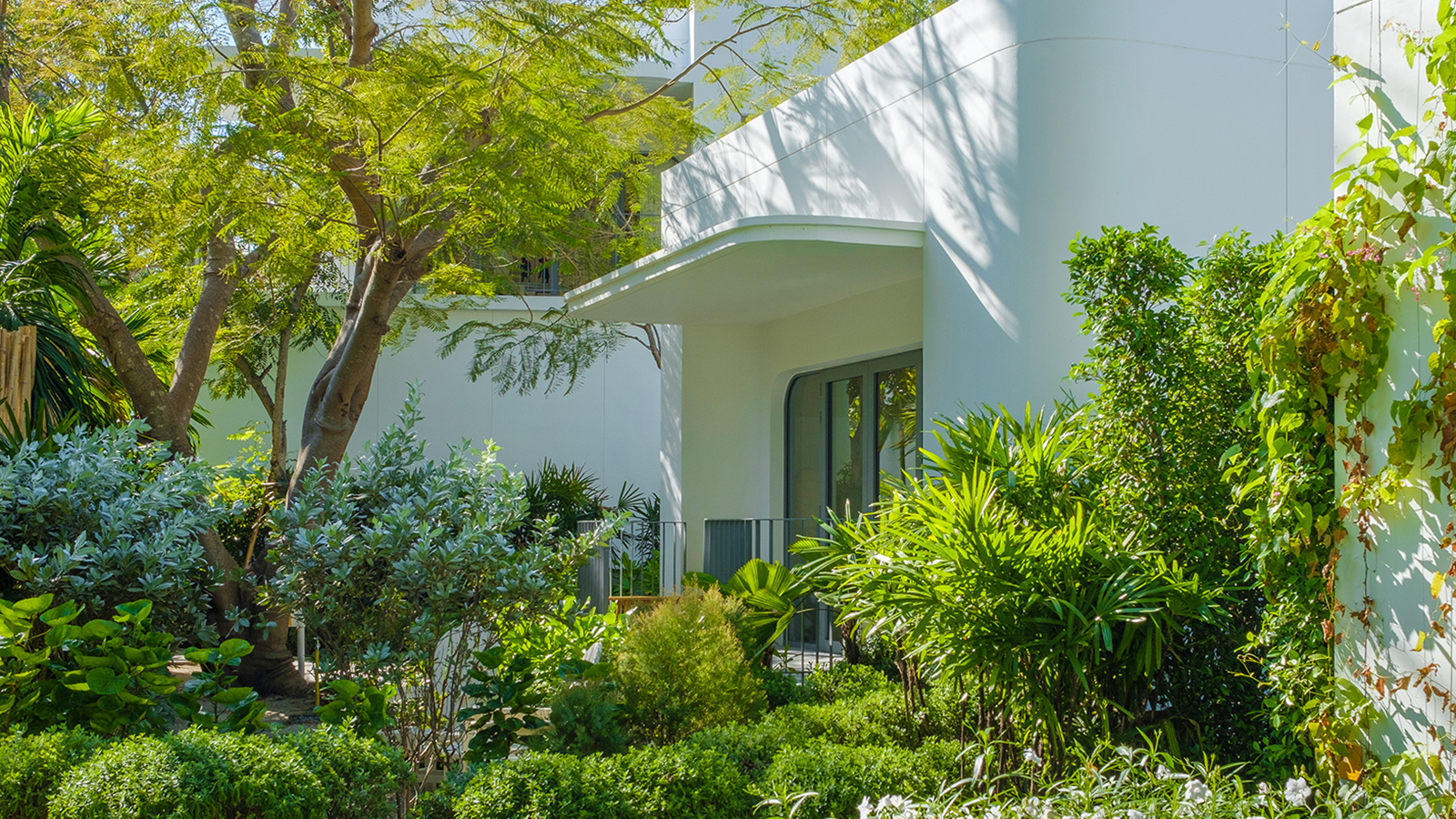
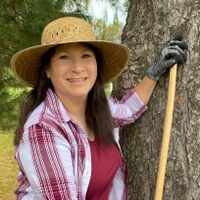
Melanie Griffiths
I live in an older home – one built before the widespread use of central air conditioning. And, from my experience over the past four decades, previous generations had a pretty clever way of staying cool in the summer and warm in the winter: they used trees.
When we purchased our southern-facing home nearly 40 years ago, it came with two gigantic maples in the front yard and another on the east side of the house. To the west, our neighbor had similar trees in their front yard. Together, they shaded our house for most of the day during the hottest part of summer.
In the winter, once their leaves had dropped, the trees allowed sunlight to hit our enclosed brick front porch. On sunny winter days, the temperature inside the unheated porch would often exceed that of the house. When that happened, I would take advantage of the free heat by opening the door between the house and the porch.
The whole experience really made me so much more aware of the benefits of planting shade trees close to the house.
The Wrong Trees
Unfortunately, those big old beautiful maple trees came with problems. Their roots posed a danger to the foundation of our house, they were a threat to the overhead power lines, and one grew too close to an underground natural gas pipe. So, not long after moving in, we made the difficult decision to remove all three trees.
I clearly remember those first few summers without them. The house got hot, so we eventually gave in and installed central air conditioning. But while I loved my cool house in the summer, I didn't like the high electric bills.
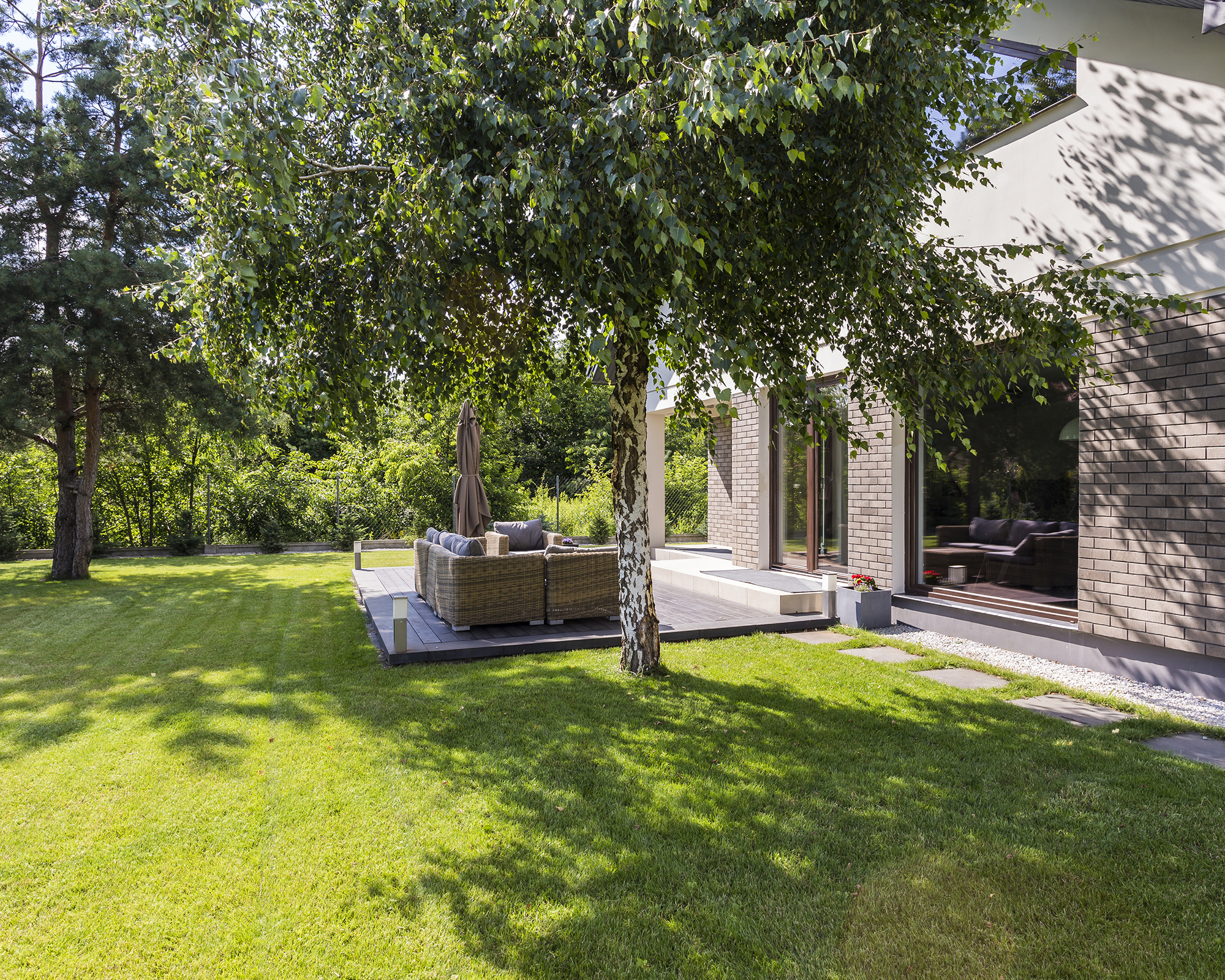
Replanting for Energy Savings
A few years later, as electricity rates began to rise in our area, we decided to try again – with a smarter approach. To help keep our house cooler in the summer, we planted a fast-growing dawn redwood in the front yard, a safe distance from our home. Although these trees belong to the conifer family, dawn redwoods are deciduous, meaning they drop their needles in the winter.
Sign up for the Gardening Know How newsletter today and receive a free copy of our e-book "How to Grow Delicious Tomatoes".
According to experts, deciduous trees are the best choice for shading the east and south sides of buildings in summer. Properly placed shade trees prevent the sun's rays from hitting the roof and windows. Without shade, asphalt shingles and glass-pane windows absorb and conduct solar energy into buildings. In winter, the bare trees let the right back in – right where you want it.
How Trees Naturally Cool the Air Around Your Home
Trees do more than cast shade. Through a process called evapotranspiration, they actually reduce the surrounding air temperature. As trees absorb water from the ground and release it as water vapor through their leaves, they can reduce the temperature around the tree by as much as 6°F or 3.3°C.
And because cool air sinks and settles near the ground, the temperature underneath a shade tree can be as much as 25°F (14°C) cooler than the heat radiating off nearby blacktop. Urban areas often take advantage of this by planting trees along streets.
Best Trees for Shade and Energy Savings
By planting the right type of trees in the right location, you can reduce the amount of heat your house absorbs and reduce your cooling cost. Look for trees that won't damage your foundation or underground pipes, and position them so that they won't interfere with power lines at mature height. Here are a few suggestions for trees that will not only shade your home, but are among the safest to plant close to a house.
1. American Hornbeam
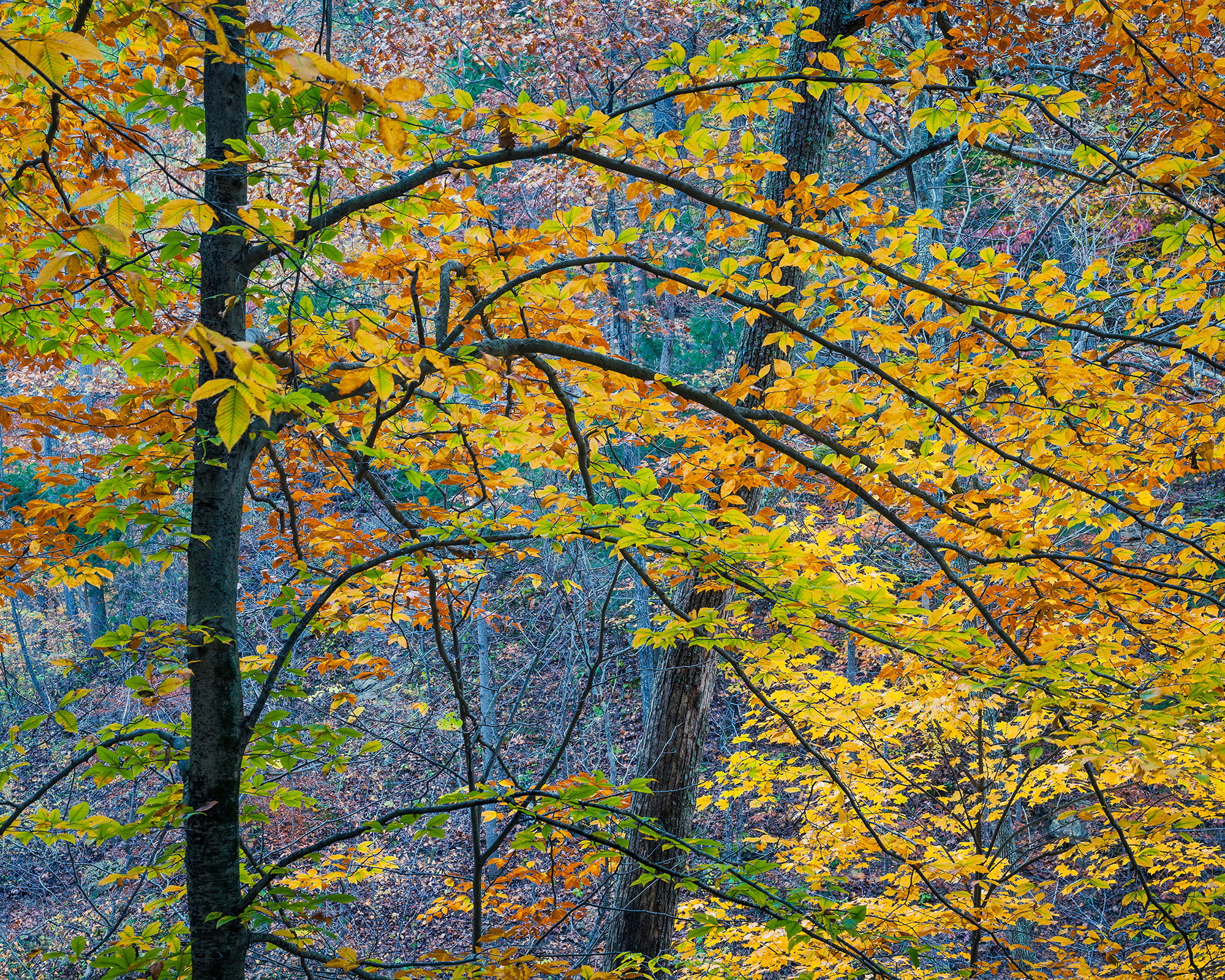
The American hornbeam (Carpinus caroliniana) – also known as musclewood – has a compact size, non-invasive roots, and dense canopy, so it is ideal for planting close to a house. The tree's slow growth and modest height (typically 20 to 30 feet) make it an excellent choice for providing targeted shade to windows and walls. Suitable for a wide range of soil types and growing situations in USDA zones 4 to 8.
Buy American hornbeam seedlings at Walmart.
2. Eastern Redbud
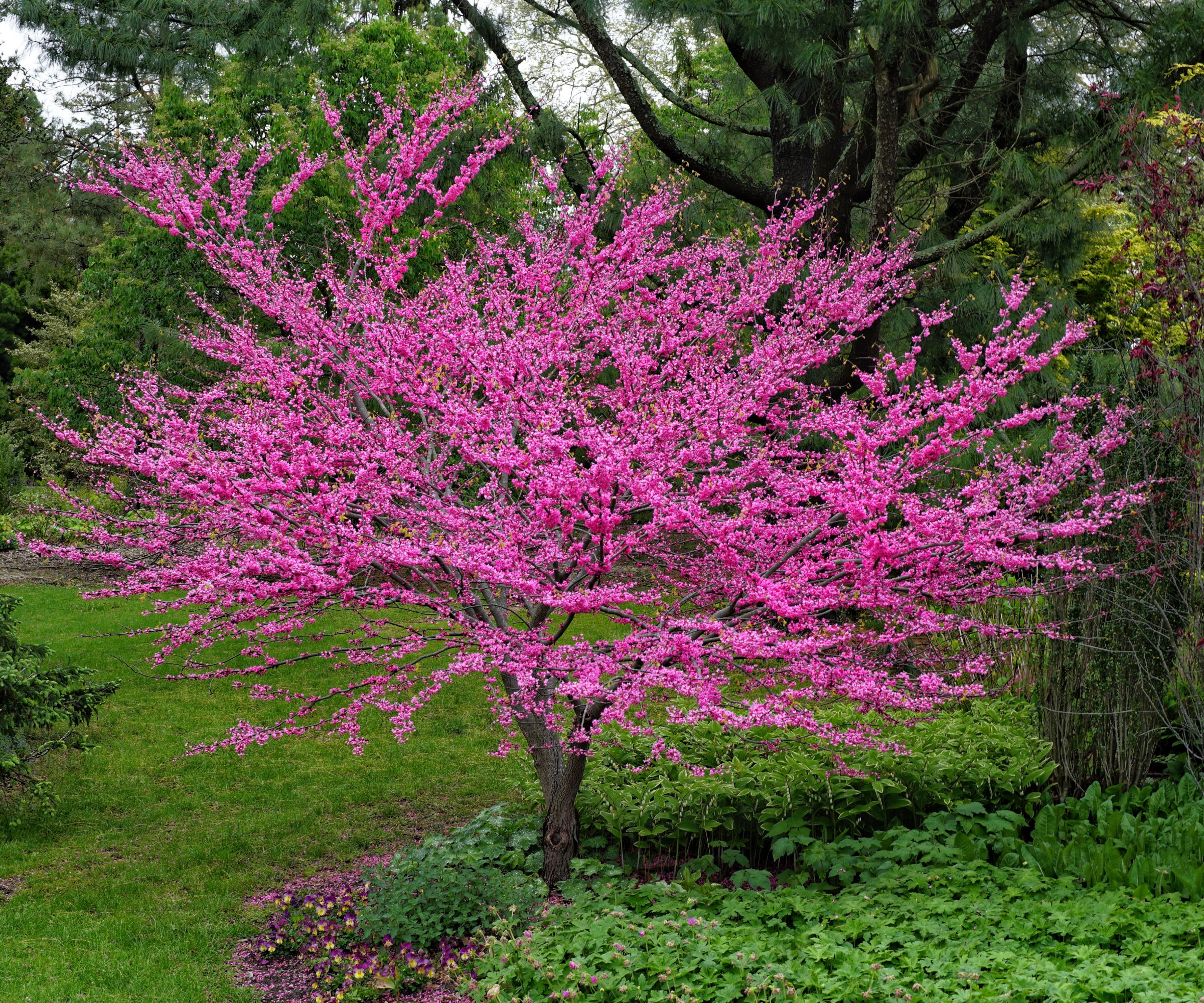
The Eastern redbud (Cercis canadensis) is a small native tree with heart-shaped leaves that provide gentle, dappled shade, making it ideal for planting close to homes or patios. In the spring, the tree is one of the first to bloom, coming to life with a stunning display of pink flowers. Adaptable to a variety of soil types in USDA zones 4 to 9.
Buy Eastern redbud trees at FastGrowingTrees.com.
3. Crepe Myrtle
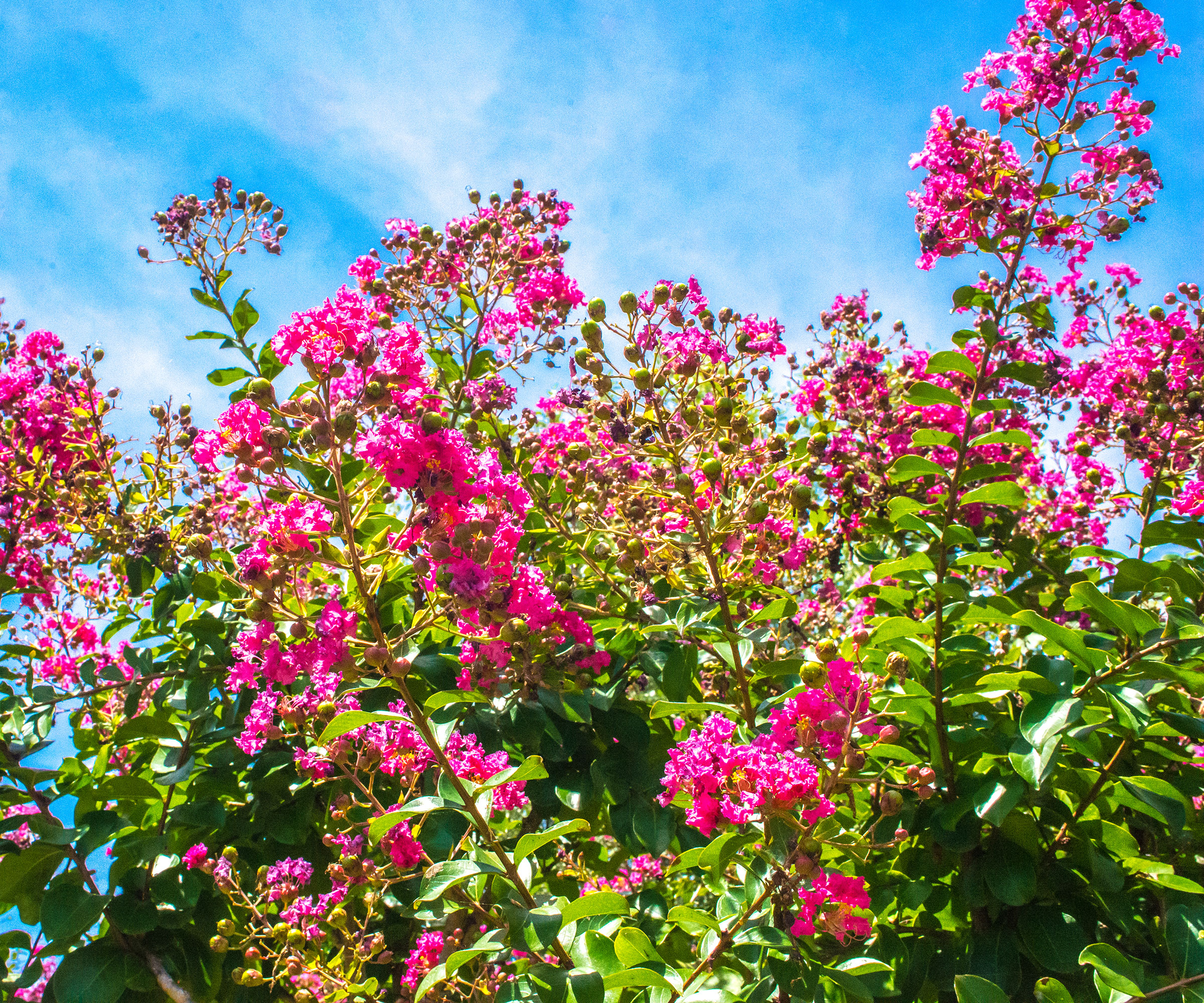
Popular in warmer regions, crepe myrtle (Lagerstroemia indica) is a multi-trunked ornamental tree that provides filtered shade and vibrant summer blooms. Its compact size – around 15 to 30 feet – makes it a safe option to plant close to houses. These trees thrive in hot humid climates in a variety of soil types and are suitable for USDA zones 7 to 10.
This Thunderstruck Lavender Blast crepe myrtle from FastGrowingTrees.com is quick to mature and contrasts dark foliage with bright lavender blooms.
4. Serviceberry
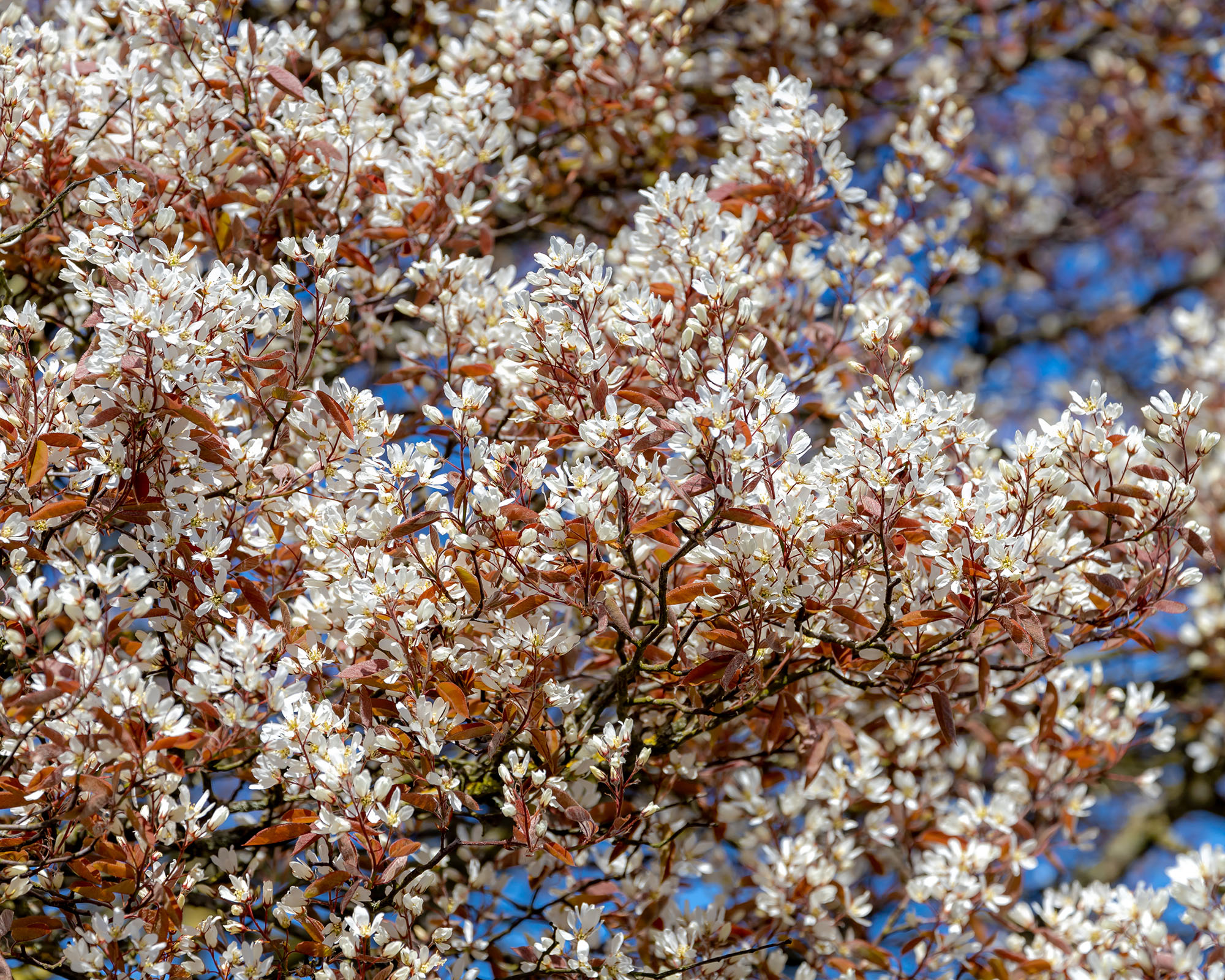
Serviceberry (Amelanchier arborea) is one of the loveliest four-season trees with spring flowers, edible berries, and bright fall foliage that drops to expose beautiful smooth bark in winter. With a height of 15 to 25 feet and a similar canopy, serviceberry is perfect for providing cooling shade in small yards. It tolerates a range of soil types in USDA zones 2 to 9.
Autumn Brilliance serviceberry, available at Nature Hills, was the variety planted by George Washington at his estate, Mount Vernon
5. Japanese Maple
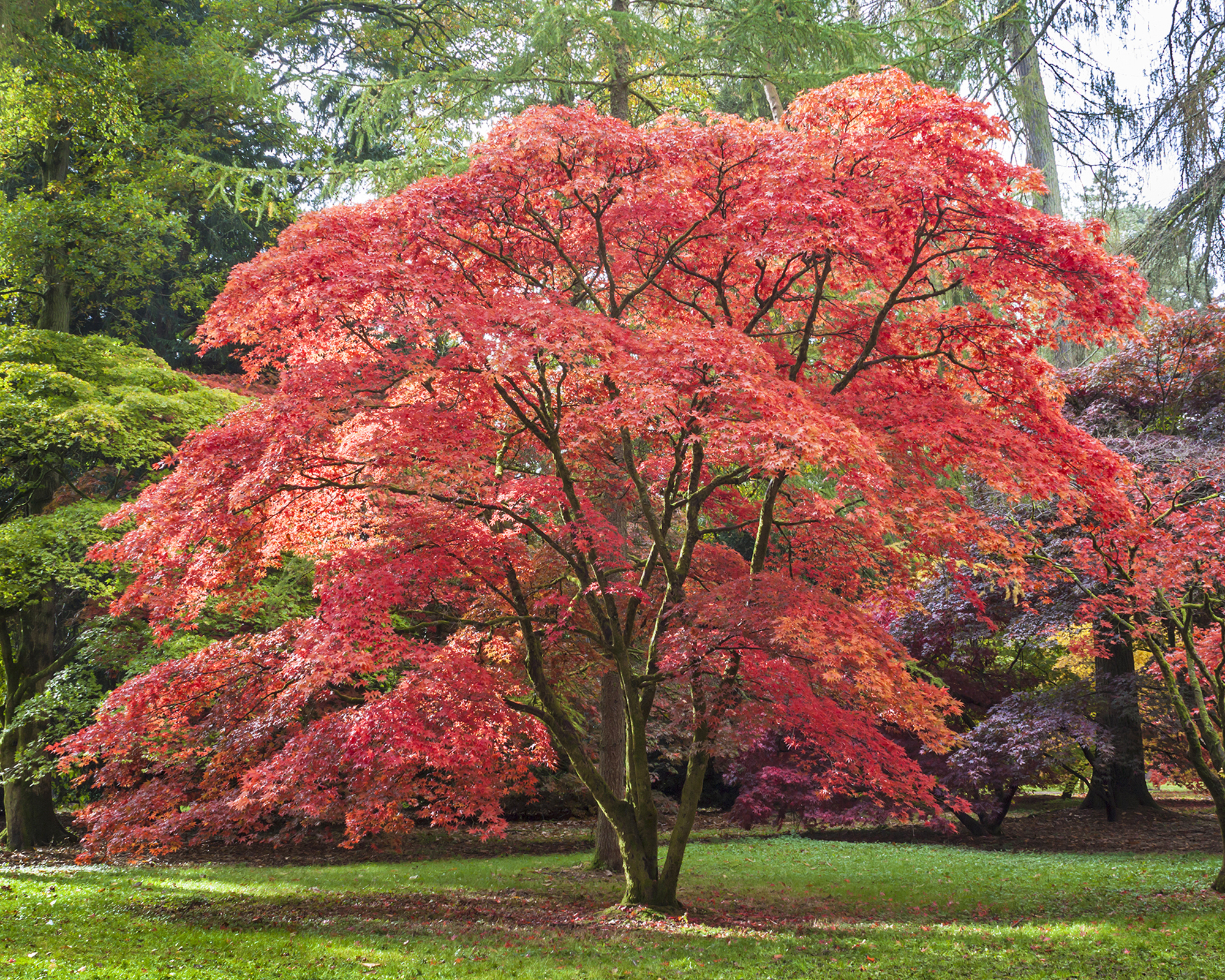
Japanese maples (Acer palmatum) are widely prized for their spectacular leaf color, particularly in the fall, and elegant form. They come in a range of sizes but are generally compact and ideal for landscaping near windows and porches. They provide moderate shade while upping your curb appeal, and are some of the best trees to add value to your home. Japanese maple trees thrive in USDA zones 5-8 in partial shade, with well-draining, slightly acidic soil.
The Coral Bark Japanese maple tree, available at FastGrowingTrees.com, is one of the most stunning varieties with four-season appeal, featuring neon green leaves that turn fiery autumnal shades before falling to reveal bold red bark in winter.
6. Hackberry
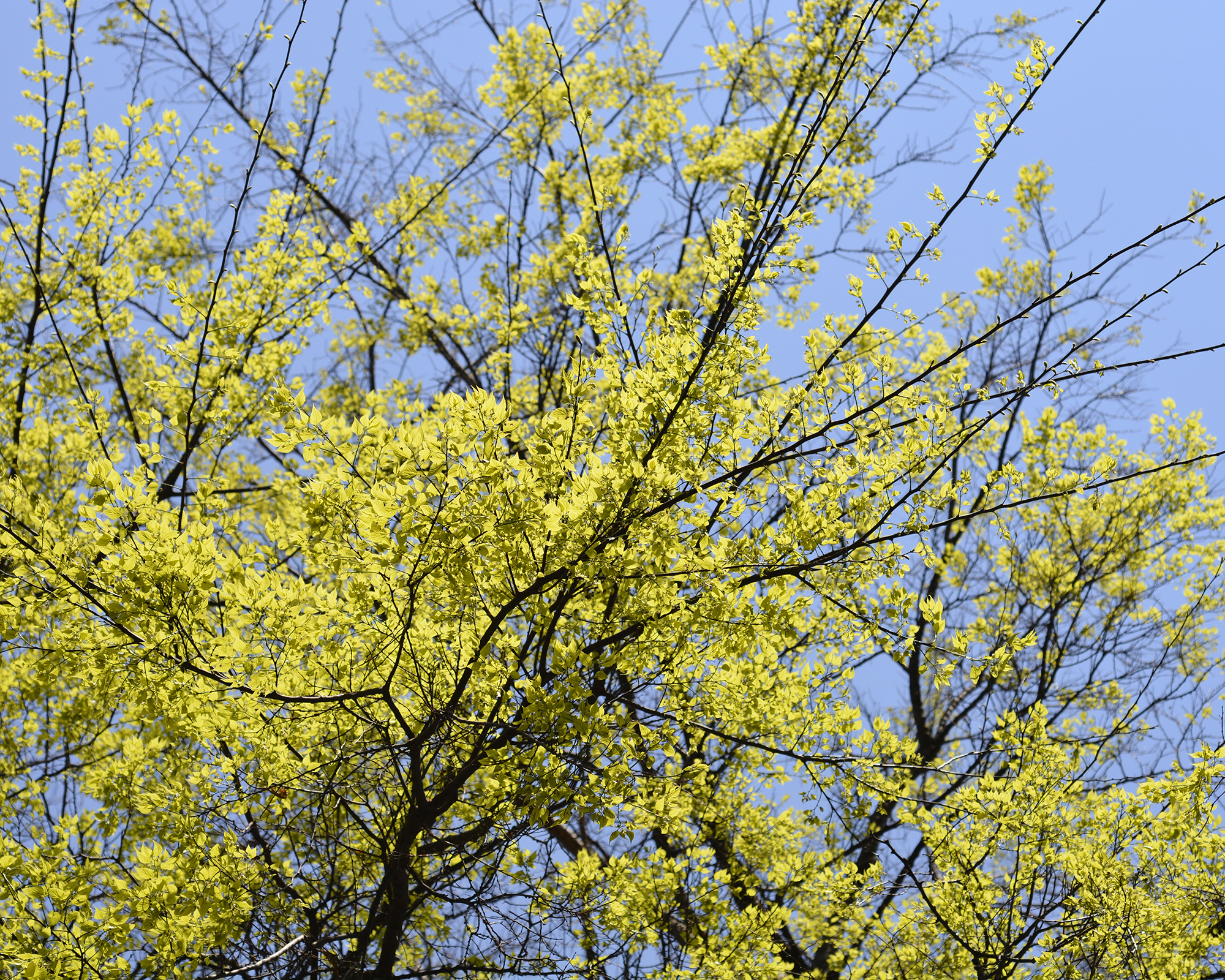
Hackberry (Celtis occidentalis) is a tough, drought-tolerant native shade tree that's widely considered one of the best urban trees. Fast growing, with a mature height of 50 to 75 feet and spread of 25 to 40 feet, it is perfect for larger yards that need shade quickly. Hackberry is adaptable to most soil types and climates, thriving in USDA zones 2 to 9.
Buy hackberry trees at Nature Hills.
7. American Sycamore
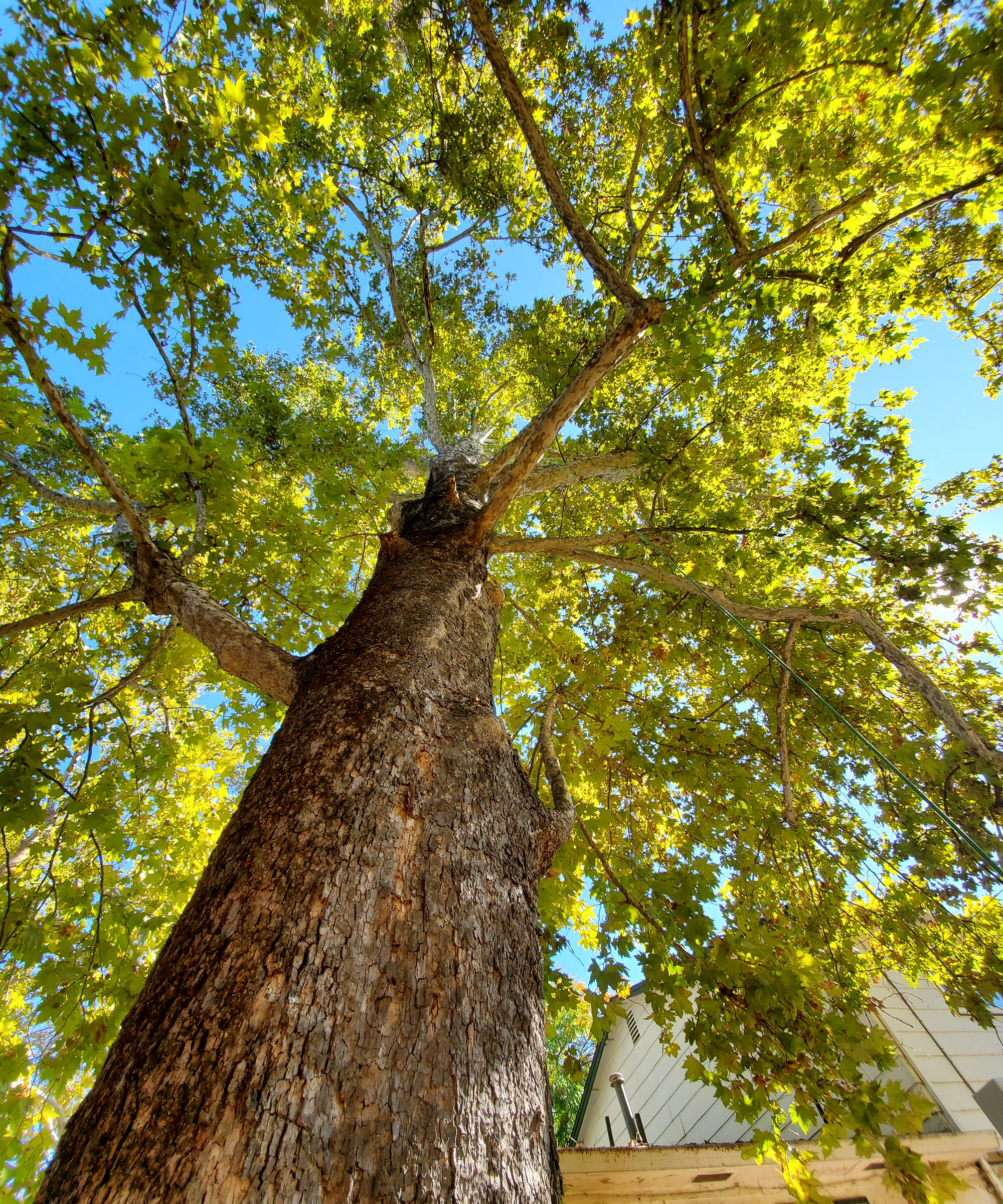
If you have a bit more space, then the sycamore (Platanus occidentalis) provides massive, cooling shade. With a mature height of up to 70 feet and a canopy width of 50 feet, it's best planted a little further from the house, but its excellent for reducing heat around a property. Sycamore trees are well suited to USDA zones 4 to 9 and most soil types.
Buy sycamore trees from FastGrowingTrees.com.
More Great Shade Trees
As well as the above featured trees, the following varieties can be planted fairly close to a house to provide shading in summer:
- American holly (Ilex opaca)
- Amur maple (Acer ginnala)
- Crabapple (Malus Sylvestris)
- Dwarf plum (Prunus domestica)
- Florida maple (Acer floridanum)
- Flowering dogwood (Cornus florida)
- Loquat (Eriobotrya japonica)
- Olive (Olea europaea)
- Pawpaw (Asimina triloba)
- Rose of Sharon (Hibiscus syriacus)
- White birch (Betula papyrifera)
From firsthand experience, I can confidently say that the right shade trees absolutely help keep a house cooler – and do double duty by adding curb appeal, improving air quality, and even raising property value.
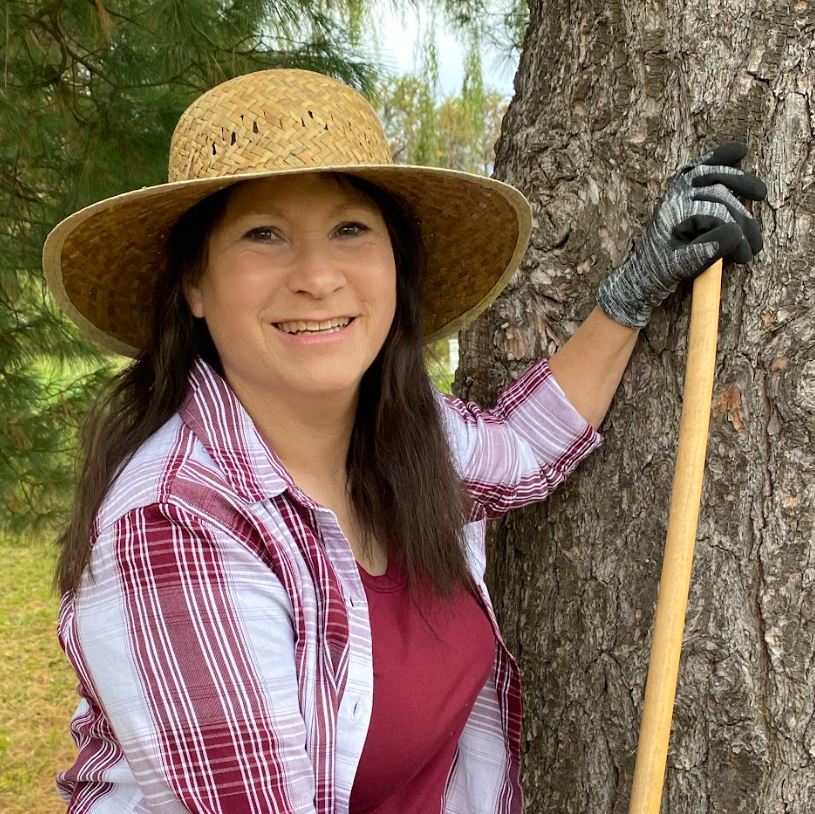
Laura Miller has been gardening all her life. Holding a degree in Biology, Nutrition, and Agriculture, Laura's area of expertise is vegetables, herbs, and all things edible. She lives in Ohio.
- Melanie GriffithsEditor in Chief